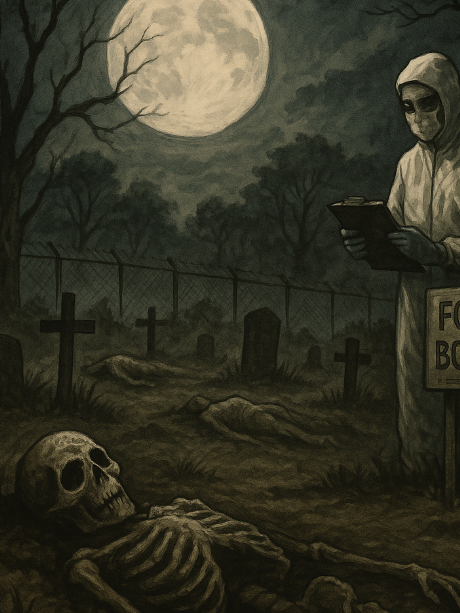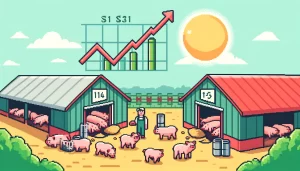
What Really Happens When Science Lets Bodies Rot
Every year, murder victims are left undiscovered for weeks, months, or even years. But what if the answer to solving these crimes lies in something as eerie as a field full of rotting corpses?
Welcome to the unsettling world of body farms—research facilities where human cadavers are left to decompose in controlled conditions. These sites sound like the setting for a horror movie, but they are actually some of the most valuable laboratories for modern forensic science. And in the spirit of Halloween, let’s dive into what makes them both spine-chilling and life-saving.
Death as Data: Why Body Farms Exist
Back in 1981, Dr. William Bass founded the world’s first “body farm” at the University of Tennessee, Knoxville. Before then, scientists relied mostly on animal carcasses—especially pigs—to estimate how humans decomposed. But here’s the creepy twist: pigs rot much faster than people.
That matters. If investigators are trying to estimate the “postmortem interval”—how long a body has been dead—using the wrong model could throw off timelines by days or weeks. In murder trials, that gap could be the difference between convicting a killer and letting them walk free.
So, despite the public shivers they cause, body farms were born out of necessity. Science needed to watch what really happens when human bodies meet soil, sun, insects, and weather.
But here’s where it gets interesting…
No Two Corpses Are Alike
Even when two cadavers are placed side by side under the same conditions, they don’t decompose in the same ways One may melt into skeletal remains faster; the other lingers in a bloated, mummified state.
Why? Just like in life, in death we are unique. Diet, genetics, medications, chemotherapy treatments, and even how much body fat you carry can shape the gruesome journey of decomposition. Forensic scientists call this variability a challenge—but also a treasure trove of data.
It’s like weather forecasting: no single storm is identical, but with enough observations, patterns emerge. That’s why body farms repeat experiments repeatedly, building long-term datasets to make more accurate predictions.
Still, the mystery deepens…
Ghostly Lessons Across the Globe
The Tennessee facility inspired others. Today, body farms exist across the U.S., and Australia opened its first in 2016. Plans are even underway in Europe.
But decomposition isn’t universal. What happens to a corpse in the dry heat of Texas is not what happens in the humid tropics of Brazil or the frozen soils of northern Europe. Local insects, climate, and soil microbes all play starring roles. That’s why scientists caution against applying results from one region to another.
In fact, there’s a growing push for more global body farms—to ensure forensic investigators everywhere, from Lagos to São Paulo to Delhi, have evidence that reflects their local environment.
And speaking of global impact, the applications stretch far beyond Halloween thrills…
From Horror to Heroics
The research conducted at these facilities doesn’t just help catch killers. It also improves how first responders locate bodies after disasters, wars, or genocides
Take the training programs run with law enforcement: FBI agents, police officers, and rescue teams learn how to recognize the faint signs of a clandestine grave or the scent of remains hidden in rubble. At Australia’s AFTER facility, police now request specific experiments to help solve local cases.
In other words, what starts as a gruesome scientific setup ultimately provides families with closure, aids human rights investigations, and helps communities recover after tragedy.
But the story isn’t all triumph…
The Controversy in the Shadows
Many forensic scientists avoid even using the phrase body farm—they prefer “Forensic Anthropology Research Facility” or similar acronyms. Why? The term can sensationalize the work, reducing serious research to a sideshow.
There are also ethical debates: who donates their bodies, and how should they be treated? And what about the sheer creep factor—neighbors don’t always want a field of rotting bodies nearby.
Yet despite these controversies, the demand for body farms is growing. Mass disasters, climate change, and ongoing conflicts mean investigators need better, faster ways to identify the dead.
So as unsettling as they seem, body farms may be one of the most quietly heroic scientific tools of our age.
Let’s Explore Together
Halloween reminds us that death and decay are never far from human imagination. But for forensic scientists, decomposition isn’t just spooky—it’s data. Every maggot, every stage of bloating, every soil stain tells a story that might solve a mystery, deliver justice, or bring peace to a grieving family.
So let’s leave the haunted houses and zombie flicks behind for a moment and appreciate the real science of rot.
- Could a body farm in your region help improve local investigations?
- If you were on a research team, what variable—climate, diet, or genetics—would you want to test next?
- What other everyday mysteries do you wish science could solve using such bold, unconventional methods?
Because sometimes, the scariest science is also the most important.



